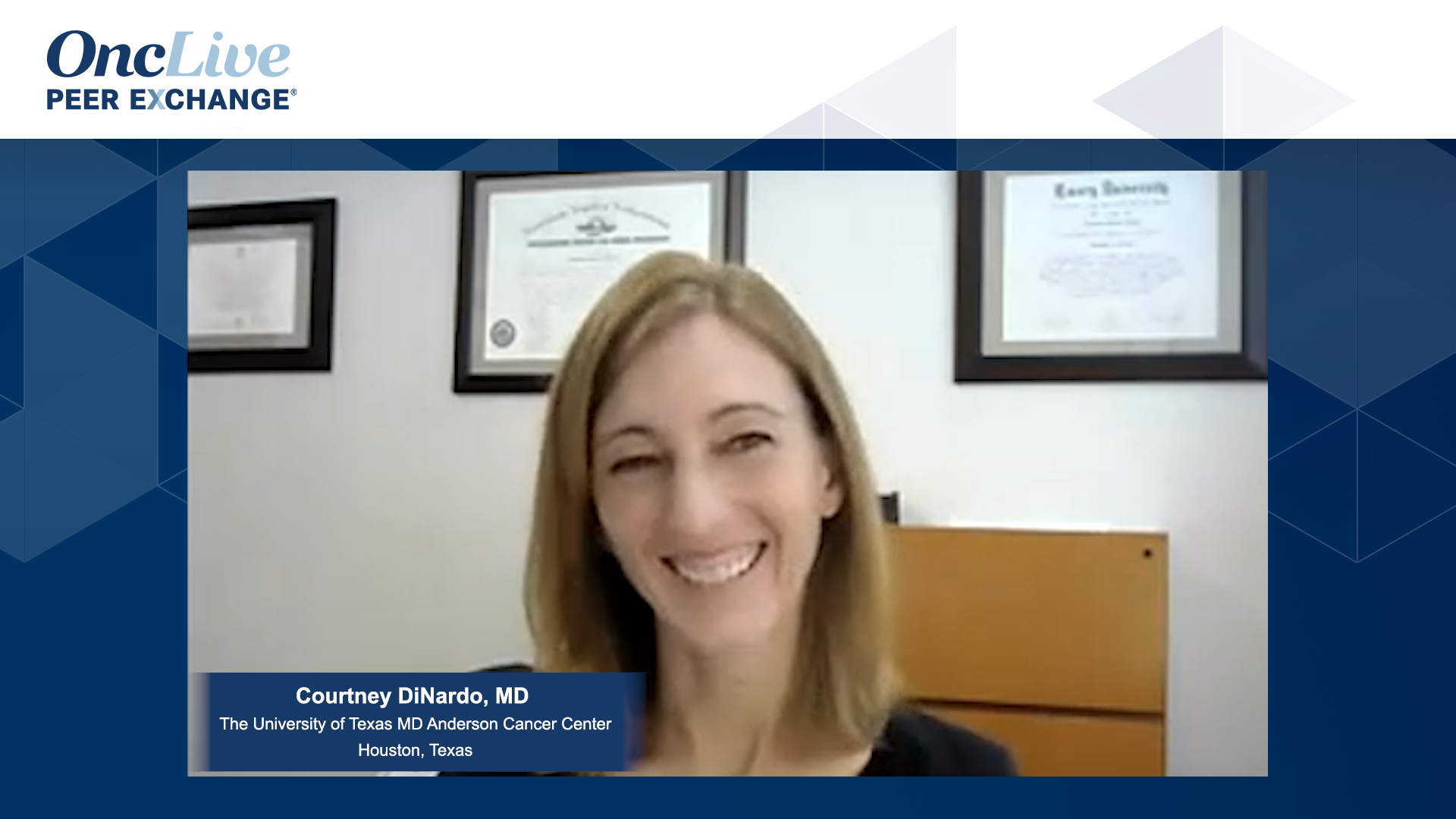- Advertise
- About OncLive
- Editorial Board
- MJH Life Sciences brands
- Contact Us
- Privacy
- Terms & Conditions
- Do Not Sell My Information
2 Clarke Drive
Suite 100
Cranbury, NJ 08512
© 2025 MJH Life Sciences™ and OncLive - Clinical Oncology News, Cancer Expert Insights. All rights reserved.
Molecular Testing Turnaround Time and Treatment Delay
Key opinion leaders in acute myeloid leukemia reflect on challenges associated with molecular testing by commenting on potential treatment delay from the long turnaround time (TAT) of next-generation sequencing.
Harry Erba, MD, PhD: Vinod, do you think we might be doing our patients a disservice by waiting for this data? Is there anything to guide us there?
Vinod Pullarkat, MD: I generally use this information to guide my treatment. If there’s a therapy dependent upon a mutation coming back, then it’s critical to wait. But if you have an older patient who’s ineligible for anything other than HMA [hypomethylating agents]–venetoclax, it’s not that critical to wait for the mutation to be back. Some of it has to be guided by what treatment we’re going to use. We know now that a reasonable delay in certain patients with AML [acute myeloid leukemia] … doesn’t impact outcomes. Depending on what choices we have, it would be a rapid AML panel that can come back in about 72 hours. As Mark said, if we do a FISH [fluorescence in situ hybridization] for core binding factor patients, that comes back in about 48 hours. Some of that information will be readily available, but if you’re committing a patient, for example, with venetoclax up front with a comorbidity or age, then I don’t wait. I start the treatment right away once I establish diagnosis.
Harry Erba, MD, PhD: I agree with that. Courtney, go ahead.
Courtney DiNardo, MD: I was just going to comment that it’s really important to remember that when we say it’s OK to wait for mutational information and genomic information to come back, it doesn’t mean we’re sitting there watching a white [blood cell] count go from 50,000 to 100,000 per mm3 and leukostasis developing but not doing anything. The point is that the majority of patients probably don’t have that proliferative degree of AML at diagnosis, especially our older patients or patients with underlying MDS [myelodysplastic syndrome] or … a neurological disorder, so there’s time to wait. For patients for whom there’s clear evidence of disease that’s active, starting patients on Hydrea [hydroxycarbamide], or even giving a 1 g of cytarabine as our institution [The University of Texas MD Anderson Cancer Center] often does, just to calm things down is advised. I want to make sure we aren’t making a case to say that we can just sit and watch disease start proliferating and not do anything.
Harry Erba, MD, PhD: Mark?
Mark Levis, MD, PhD: We’ve all been in this situation where we think we’re going to give HMA and venetoclax because the person is borderline, older, etc. There are some patients who, when I’ve started HMA and venetoclax and they come back with a FLT3 ITD, I say, “We should have held out for intensive plus a FLT3 inhibitor.” I’m not convinced that HMA-venetoclax is so great for those patients. The borderline areas aren’t so clear.
Harry Erba, MD, PhD: That brings up a whole other topic that we’re going to get to later, because I’m sure Courtney may have a rebuttal to that; we’ll see. I agree with you. There are patients who are on the fence. I deal with this all the time—they don’t quite fit the requirements. For example, in the Viale-a trial, there are patients who are 75 years of age or older and have all the comorbidities, but you still look at them and go, “I’m not sure I’d want to give them 7+3 [cytarabine, daunorubicin, idarubicin, mitoxantrone],” so I use the mutational profile to help. The other point is for patients with TP53 mutations. If I have a patient who’s fit for intensive chemotherapy, I’d much rather prioritize them for a trial—maybe we’ll get to that later. There’s activity with HMA-venetoclax in that group of patients, at least initially, even though survival doesn’t look great with anything we do at this point other than some of these investigational therapies. We can talk more about that later. Yes, Courtney?
Courtney DiNardo, MD: I want to make 1 additional point about evaluating patients at relapse and making sure to do molecular and genomic evaluation for our relapsed patients. The case was made that FLT3, IDH1, and IDH2 are relevant, but NPM1 and TP53 are also really important in relapsed patients. We’re trying to figure out if they could they benefit from a reinduction or a cytarabine-based therapy, or if we should be prioritizing something else and some of the clinical trials for patients with TP53 mutations, for instance. That’s an important concept, also.
Mark Levis, MD, PhD: I like to get the whole picture at relapse and know how this disease has changed.
Harry Erba, MD, PhD: Those are all excellent points. I was focusing on if you want to get something quick. I would get the PCR [polymerase chain reaction] for ideation of FLT3. We have commercially available products for those, but I agree with all the points you’ve made.
TRANSCRIPT EDITED FOR CLARITY
Related Content:





